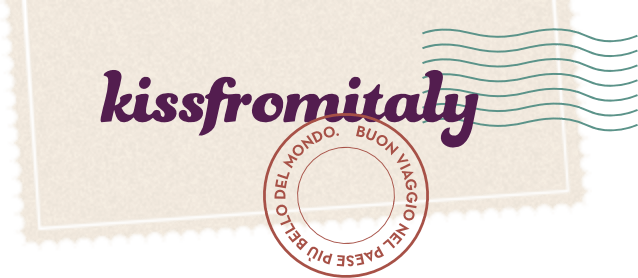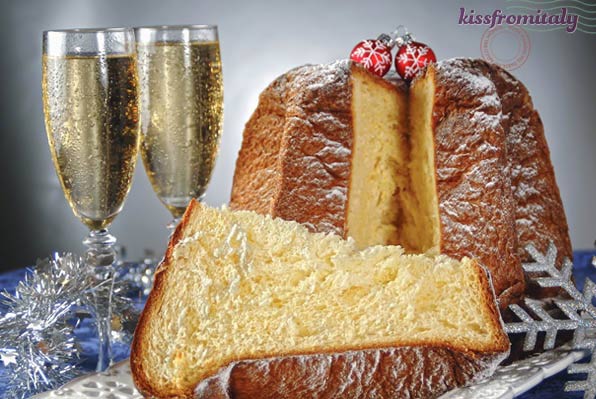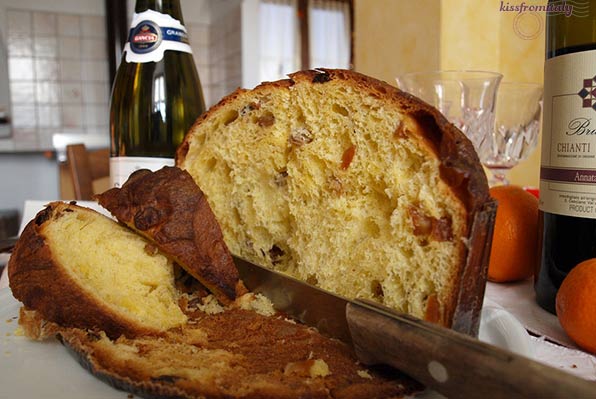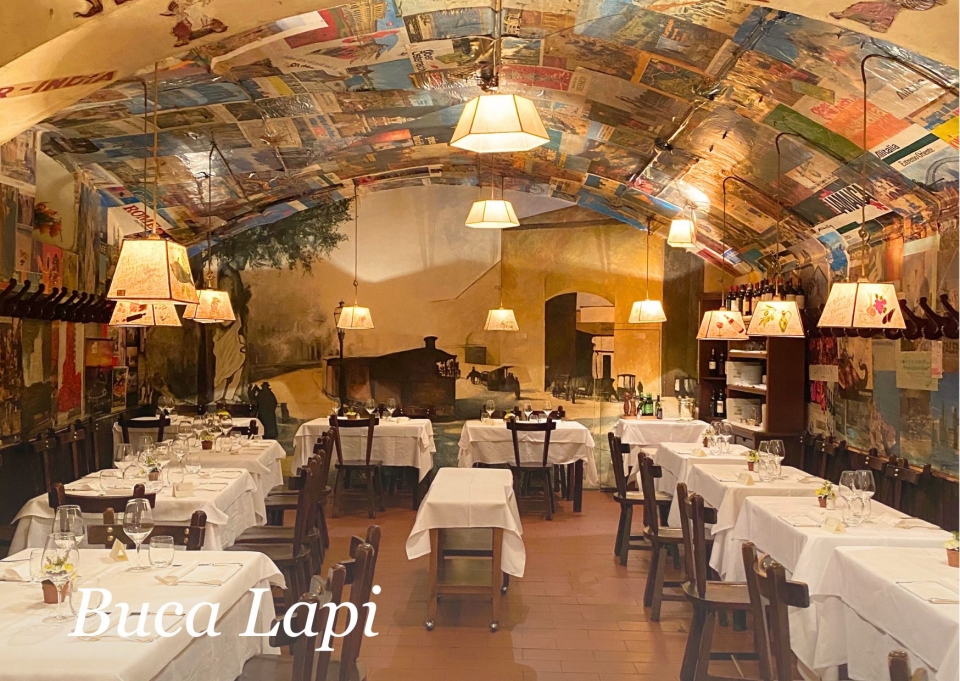
Sweet Italian Christmas Traditions
It's impossible to think of Christmas in Italy without thinking of Panettone and Pandoro.
In december the grocery stores are filled with towers of brightly colored cardboard-boxes of Bauli, Motta, and Tre Marie. The windows of every bakery show-off their impressive muffin-topped cakes, ornately decorated and wrapped in cellophane. Far from the much-maligned fruit cake that haunts cubicles and mailboxes in America during the holiday season, Panettone and Pandoro are a beloved tradition in Italy, and always a welcome gift during the Christmas season.
Panettone comes from Milan, and in fact is one of the symbols of the city. It is a sweet bread with lemon zest, and pieces of candied fruit such as orange and raisins. You'll recognize Panettone right away by its shape - a tall cylinder that puffs out in a muffin-like dome top. Panettone as we know it today is a tradition that dates back to the early 20th century, when bakers such as Angelo Motta and Gioacchino Alemagna added their personal touches to the already popular bread, giving it its distinct shape and fluffy texture. The competition that sparked between these two is the reason that Panettone became so widespread and easily available within a few short years. As well as being popular all of Italy, the Christmas tradition of Panettone also thrives in South America, where it was imported by Italian Immigrants.
Gallery
Often mentioned in the same breath as Panettone is another traditional Christmas sweet bread, Pandoro. Pandoro is also said to come from Northern Italy, but instead of the Milanese Panettone, today's Pandoro is associated with fair Verona. Pandoro has the shape of an eight-pointed star, and is in fact a shade of bright yellow-gold thanks to the eggs and vanilla flavor that it is made with. It is almost always served with a dusting of powdered-sugar, which gives it the festive appearance of a snow-covered peak in the Alps. Aside from the shape and sugar-coating, the main thing that sets Pandoro apart from Panettone is the lack of candied-fruits, either a huge advantage or a tragic flaw depending on who you ask.
No Italian Christmas is complete without at least one Panettone or Pandoro, and if you ask us it's best to cover your bases and have both. Head to your local Italian Bakery and pick up these traditional treats to add a bit of Italian tradition to your Christmas dinner. If you're really feeling adventurous, impress your Italian friends and family, and any sweet-loving guests for that matter, by cooking it yourself! You can find lots of recipes online, such as this panettone recipe and this pandoro recipe, both by Susan on her blog Wild Yeast. You'll need some special tools like the star-shaped cake pan for the Pandoro, and the paper molds for the Panettone, but they are a sure-fire crowd pleaser!
You can always trust Italians to preserve delightful traditions for every holiday and occasion! The sweet and fluffy Christmas Panettone and Pandoro are the perfect example.









